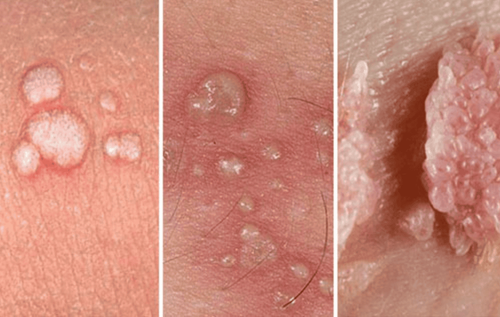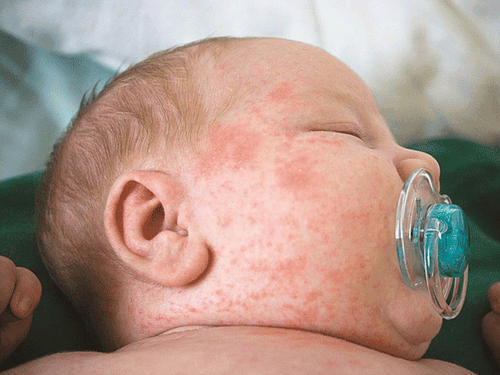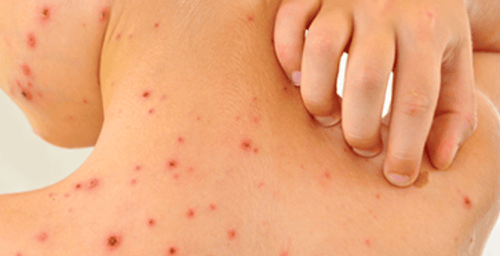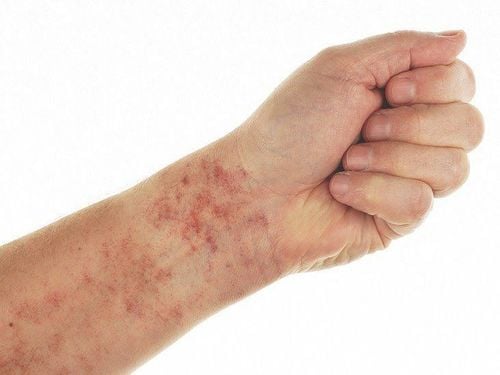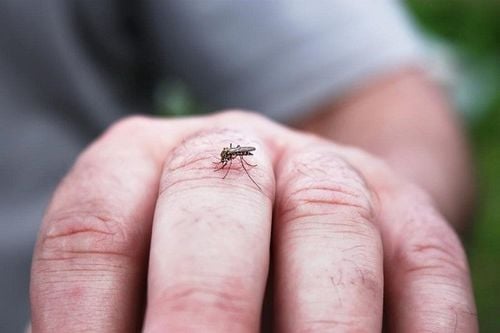Rash fever, measles, and dengue fever are different types of illnesses, but they share similar initial symptoms. As a result, patients may easily confuse them, leading to misdiagnosis. Identifying and distinguishing between rash fever, measles, and dengue fever will assist patients in monitoring and managing their condition effectively.
This article is professionally consulted by Specialist Level 2, MD Nguyen Thi My Linh - Department of Pediatrics - Neonatology at Vinmec Da Nang International General Hospital. She has 12 years of experience in diagnosing and treating pediatric conditions, particularly in neonatal resuscitation and the management of pathological conditions in newborns. Additionally, the doctor has expertise in breastfeeding counseling as well as nutritional assessment, consultation, and intervention in children.
1. Overview of rash fever, measles, and dengue fever
Rash fever
Rash fever is a common illness in children, especially in those aged 6 to 36 months, causing high fever, itching, and discomfort. The itching associated with rash fever in both children and adults is primarily caused by human herpesvirus 6 (HHV-6), or in some cases, by human herpesvirus 7 (HHV-7). Transmission occurs through direct contact with an infected person or through their personal belongings.
Measles
Measles is an illness caused by a strain of the morbillivirus, belonging to the Paramyxoviridae family. It is an acute virus that poses significant risks and can lead to serious complications if not treated properly and promptly.
Dengue Fever
Dengue fever is an acute infectious disease caused by the Dengue virus. The disease spreads through the Aedes mosquito, which transmits the Dengue virus from infected individuals to healthy ones. Dengue fever can cause severe pain in the muscles and joints.
The disease occurs year-round but often increases during the rainy season. It affects both children and adults. If not diagnosed early and treated promptly, it can lead to severe dengue, which may result in heavy bleeding, sudden drops in blood pressure due to shock, and even death.
2. Distinguishing rash fever from measles and dengue fever
2.1. Causative agents
Rash fever is primarily caused by common viruses (70% - 80%), with respiratory viruses being the most prevalent, and most of these viruses are benign.
The causative agent of measles is a virus belonging to the morbillivirus genus within the Paramyxoviridae family. Measles is an acute viral infection.
The primary causative agent of dengue fever is the dengue virus, which is transmitted by the Aedes aegypti mosquito. The transmission cycle mainly involves female Aedes mosquitoes feeding on the blood of infected patients, after which the virus incubates in the mosquito's body for 8 to 11 days before being transmitted to humans during subsequent bites.
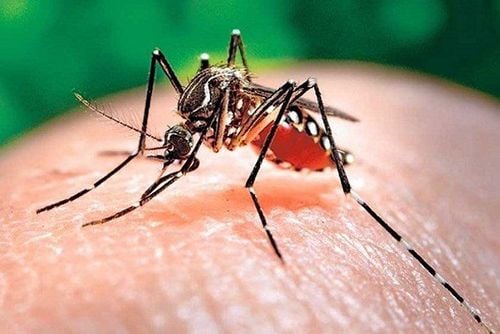
2.2. Clinical signs and symptoms
Incubation period
The incubation period, or the prodromal phase, for rash fever, measles, and dengue fever averages about one week.
However, the prodromal phase of rash fever and measles often presents with quite similar symptoms, characterized by signs of viral exanthematous fever such as fever (mild or high fever of 38 – 39 degrees Celsius), along with feelings of fatigue and lethargy due to elevated body temperature.
In contrast, dengue fever presents with symptoms resembling those of influenza. Patients typically experience a sudden onset of high fever, with temperatures potentially rising abruptly to 39 - 40 degrees Celsius, persisting for several days. Accompanying symptoms may include nausea or vomiting, sore throat, orbital pain, rhinorrhea and diarrhea. Similar to viral exanthematous fever in children, dengue fever in children may present with complaints of headache or myalgia, decreased appetite, and some children may experience vomiting or diarrhea.
Acute Phase
The most distinct differences between rash fever, measles, and dengue fever become apparent during the acute phase.
Rash fever: After the fever subsides, the patient will present with a rash, which is characterized by a smooth, bright erythema that is slightly elevated from the skin surface.The rash appears simultaneously across the child's body and typically resolves without leaving any lasting traces on the skin.
Measles rash: Initially, the rash appears behind the ears, then spreads to the face, gradually descending to the chest and abdomen, and eventually covering the entire body. As the measles rash fades, it disappears in the same order in which it appeared. The characteristic feature of the measles rash is that it presents as papules that are raised from the skin surface, and upon resolution, it leaves behind distinctive brownish spots on the skin, commonly referred to as "copper-colored spots."
Rash fever may also present with a red rash similar to that of dengue fever. To differentiate, one can use the thumb and index finger of the same hand to apply pressure around the rash. If the red spot disappears upon pressure and returns immediately after releasing, it indicates rash fever. Conversely, if the spot remains visible or the redness reappears after a delay of 2 seconds, it suggests dengue fever.
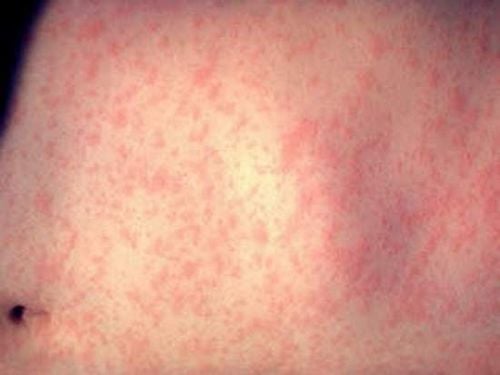
2.3. Severe complications of the diseases
Rash fever:
Due to the fact that most common viral infections are benign, when a child has a rash fever, if they receive appropriate care regarding nutrition and personal hygiene, the condition typically resolves spontaneously within 5-7 days and rarely leads to any serious complications.
Measles:
Measles can cause many serious complications in children if the illness is not detected and treated promptly, especially in those with significantly weakened immune systems, such as severely malnourished children, infants under 12 months of age, and children who are on long-term corticosteroid therapy.
Common complications of measles include:
- Acute otitis media, occurring in approximately 10% of cases,
- Severe pneumonia, occurring in about 5% of cases,
- Other less common but serious complications such as encephalitis, occurring in about 1‰, corneal ulceration which can lead to blindness, and severe malnutrition following measles infection.
Dengue fever:
- Hemorrhagic shock: Due to the hemorrhagic nature of the disease, increased capillary permeability, plasma leakage, and hemoconcentration, leading to shock as blood is pushed out of the vessels. Significant blood loss can result in exhaustion, prolonged high fever, sweating, and frequent vomiting.
- Ocular complications: Dengue fever can lead to sudden blindness due to retinal hemorrhage or vitreous hemorrhage, causing the fluid to obscure vision and nearly blind the patient.
- Heart and kidney failure: Dengue fever can lead to heart failure due to continuous bleeding, which may result in acute kidney failure.
- Pleural effusion: Plasma leakage in the body can cause respiratory inflammation, pleural effusion, pneumonia, or acute pulmonary edema. If not treated promptly, it can be life-threatening.
- Pregnant women with dengue fever may affect the fetus and can even lead to miscarriage.
3. Prevention of rash fever, measles, and dengue fever

- Preventing the disease by vaccinating children (if applicable).
- These diseases are highly contagious in environments such as daycare centers, kindergartens and schools, so it is important to isolate and keep the child at home when they are ill.
- Ensure that the living environment is well-ventilated, hygienic, and orderly
- Limit travel to areas with ongoing outbreaks.
- When affected by these diseases, complications may arise; therefore, patients should adhere to the treatment guidelines provided by healthcare professionals.
- Always monitor body temperature closely and promptly report any worsening symptoms to a physician. Never self-medicate without a doctor's prescription.
Along with rash fever, measles, and dengue fever, viral exanthematous fever or itchy rash fever in children can easily occur at any time of the year. If you have young children in the family, it is advisable to be well-informed to take timely preventive measures.
As a key specialty area of the Vinmec Healthcare System, the Pediatrics Department consistently delivers high satisfaction to our clients and is highly regarded by industry experts for the following reasons:
- A team of pediatric specialists: Our staff includes highly qualified professionals (professors, associate professors, PhD, and master's degree holders) with extensive experience, having worked at major hospitals such as Bach Mai and Hospital 108, etc... All doctors are well-trained, professional, and possess a deep understanding of child psychology. In addition to domestic pediatric specialists, the department also collaborates with international experts from Japan, Singapore, Australia and the United States, who are at the forefront of implementing the latest and most effective treatment guidelines.
- Comprehensive services: In the field of pediatrics, Vinmec offers a complete range of healthcare services from newborn care to pediatric treatment, vaccinations, etc,... adhering to international standards to support parents in caring for their child's health from birth to adulthood.
- Advanced techniques: Vinmec has successfully implemented numerous advanced techniques that enhance the treatment of complex pediatric conditions, including neurosurgery and hematopoietic stem cell transplantation for cancer treatment.
- Professional care: In addition to understanding child psychology, Vinmec places special emphasis on creating a playful environment for children, allowing them to play comfortably and familiarize with the hospital environment, which enhances cooperation in treatment and improves the effectiveness of medical care.
To arrange an appointment, please call HOTLINE or make your reservation directly HERE. You may also download the MyVinmec app to schedule appointments faster and manage your reservations more conveniently.
To arrange an appointment, please call HOTLINE or make your reservation directly HERE. You may also download the MyVinmec app to schedule appointments faster and manage your reservations more conveniently.

